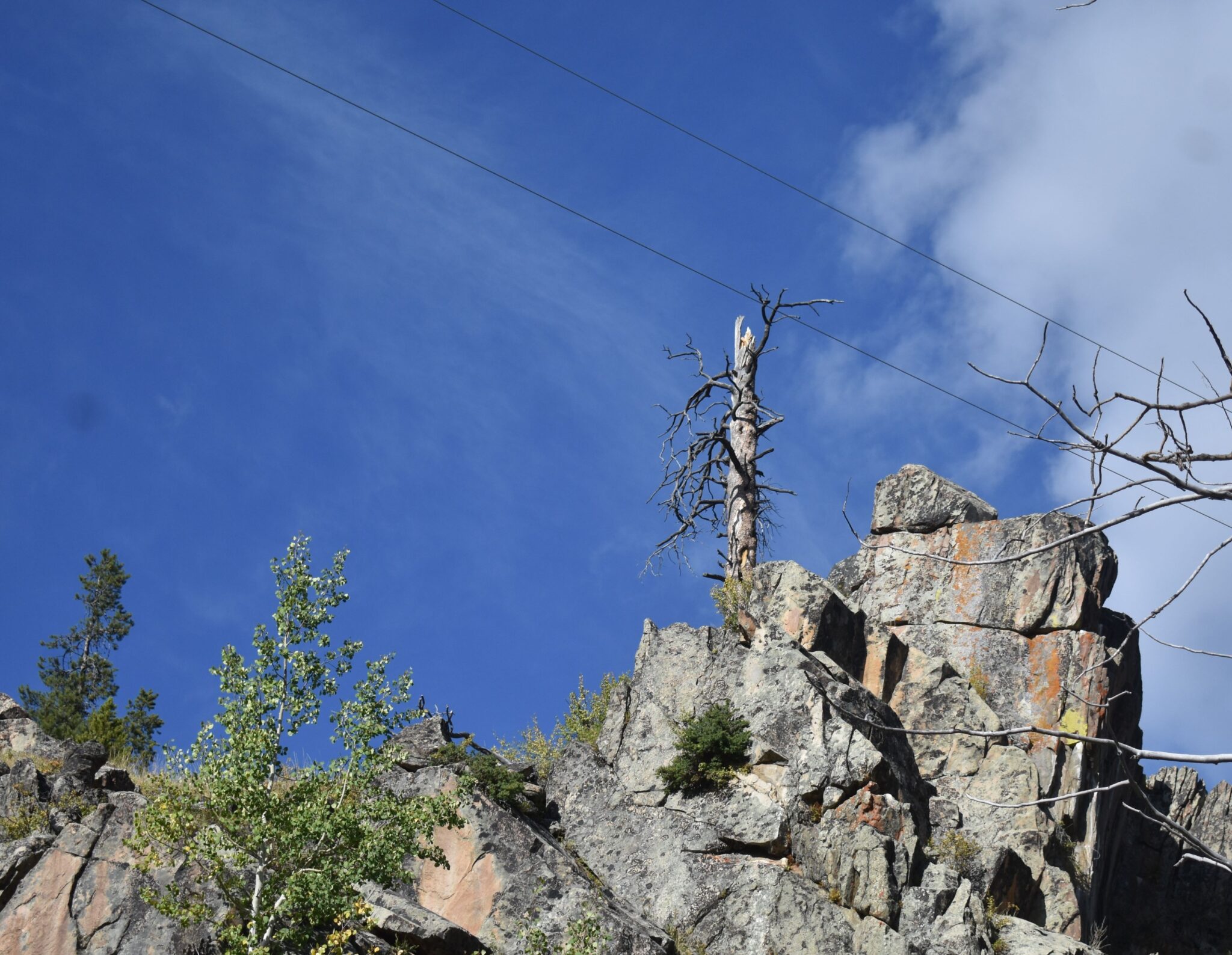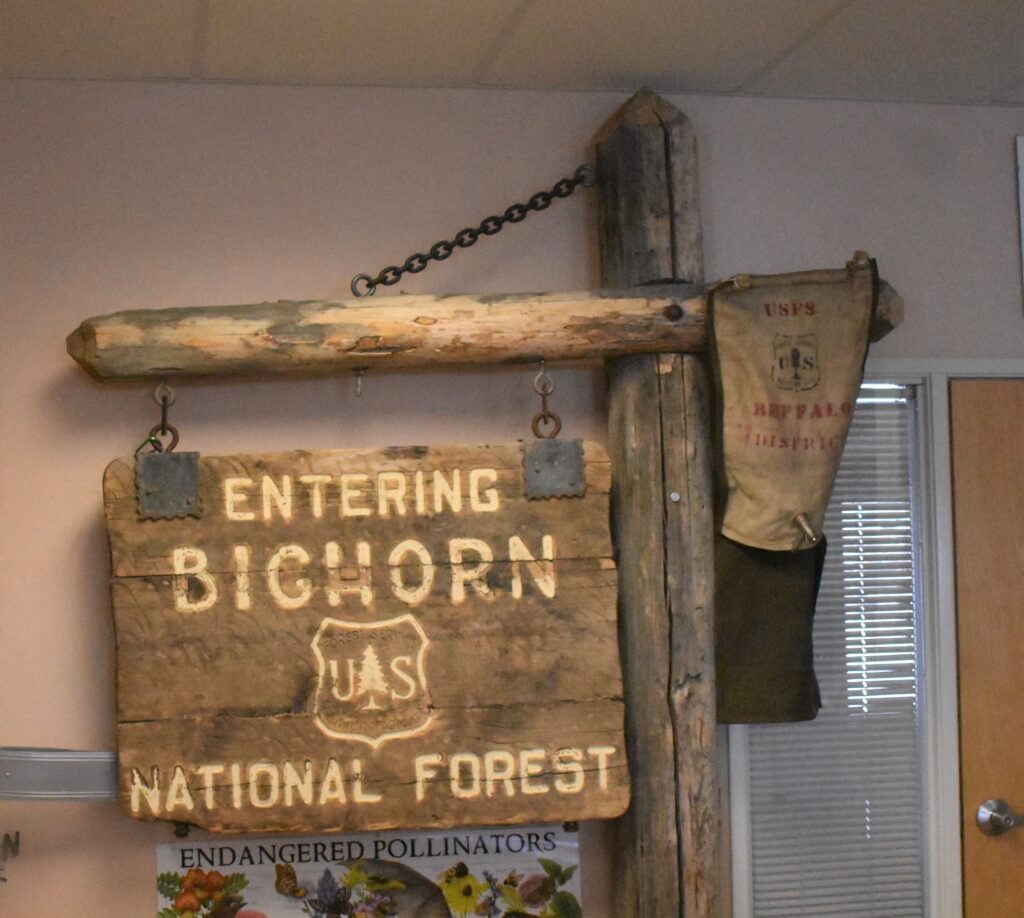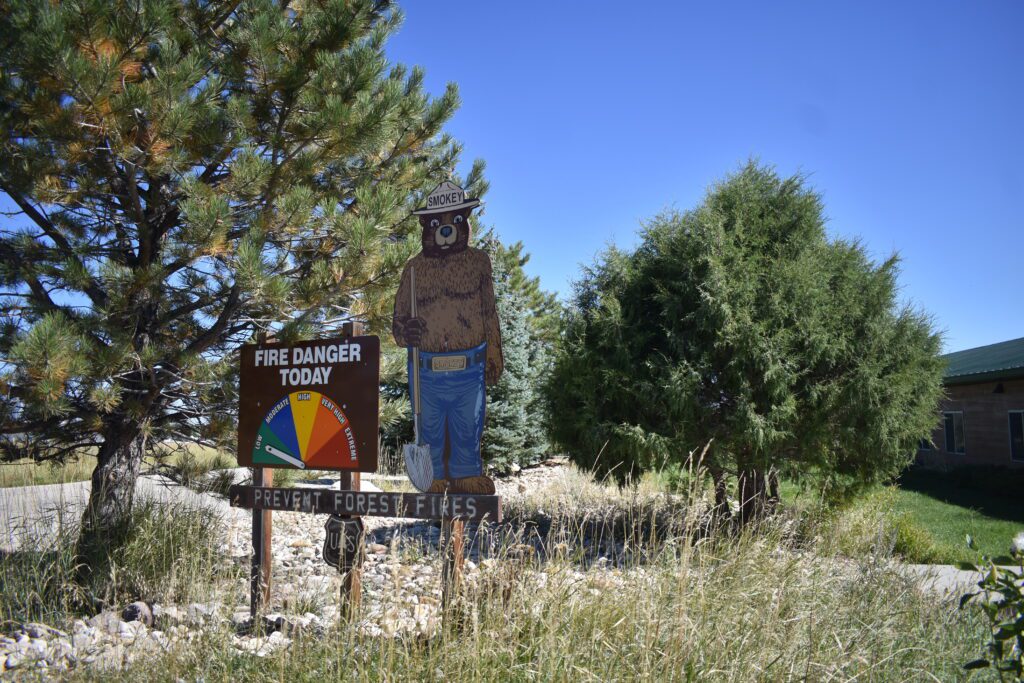News
History: Telephones Come to the Bighorn Mountains

Telephones are so common now that it is hard to imagine a time when there were none.
As early as 1895 there was this article in the Sheridan Daily Journal –Hello – There are parties in the city who are looking over the ground with view of putting telephone exchange in our city. They are practical electricians and mean business and if they receive the encouragement to which they are really entitled, it will not be long ere our city will be enjoying the benefits of telephone exchange.

It wasn’t long before Sheridan had a telephone exchange, and this was the topic of a history column on the March 25, 2023, Sheridan Media website. But today’s column will explore a much more difficult project, putting telephone lines across the rough mountain county in the Bighorn Mountains. The phones were essential to help the rangers in control of forest fires.
It was 109 years ago this month that this story appeared in The Sheridan Enterprise, September 23, 1915 – New Telephone Line Penrose Park – Work on the construction of four miles of telephone line between Big Horn and Penrose park in the Big Horn forest will begin tomorrow. The work will be under the supervision of W. Z. David, ranger in that district.
It is estimated that the line will be completed within a month. The line will be one of the most important lines In the forestry telephone service in the Big Horn forest by reason of the fact that that section is difficult to access and there In more than 100,000,000 feet of timber exposed to fire danger. At the present time it is ten miles to the nearest telephone, with the completion of the new line, the ranger in that region will have direct communication with Sheridan and other points of the mountains. With the completion of this line the forest service will have 190 miles of telephone lines communicating with all the principal settlements along the base of the mountains and all the ranger stations with the exception of Canon creek station.
The line between Sheridan and Woodrock is forty-five miles; between Woodrock and Burgess, ten miles; between Shell creek and Woodrock, eleven miles; between Burgess and Bald Mountain twenty-one miles; between Hunter station and Buffalo, sixteen miles; between Long View and Hyattville. thirteen miles; between Hunter station and Muddy creek, thirteen and one fourth miles; between the Tensleep ranger station and Ten Sleep, sixteen miles; between Burgess and Dry Fork of Little Horn, three miles; between the Shell Creek ranger station and Shell creek, twenty-one miles; between the Cottonwood ranger station to the connection with the Burgess-Woodrock line, six and one-half miles.
In addition to the telephone lines there are about 200 miles of wagon roads and 300 miles of pack trails so that the forest is well provided with moans of communication which makes it possible to get a large force of men to the scene of any fire which might occur within a comparatively short time.

A few years earlier, in the Sheridan Post, July 29, 1913, there is this story. Improve Big Horn Forest Supervisor Compiles Fiscal Year Report. Roads and Telephone Lines Constructed. During the fiscal year ending July 1, 1913, the officials of the Big Horn forest reserve supervised the construction of ten miles of new wagon road, the survey of an additional 25 miles, the construction of 40 miles of trail, 57 miles of telephone line, 18 buildings and a variety of miscellaneous improvements Including fences, bridges, corrals and ditches, all in addition to their regular administrative work, according to Forest Supervisor E. N. Kavanagh.
Supervisor Kavanagh has completed his report of the work done on the forest during the past fiscal year. The report shows that at the present time there are 201 miles of wag on road, 357 miles of trails, 149 miles of telephone lines and 13 bridges within the forest Practically all of the ranger stations are equipped with houses, barns, corrals, fences and other improvements essential to the satisfactory and efficient administration of the forest. These improvements represent an aggregate value of $60,000.
……. “During the present fiscal year, the service expects to complete telephone lines from Tongue River basin over Little Ball mountain to the Denver Cabins ranger station, on the head of Porcupine creek. A line will also be constructed from the Hunter ranger station on Clear creek, close to Buffalo, 15 miles south to the Muddy ranger station. It is also proposed to connect up a lookout station on the east side of the dry fork of the Little Horn with the Burgess ranger station on Tongue river, requiring a line about seven miles in length. A telephone line in co-operation with parties in the Basin country is now being constructed through the town of Shell up into the forest. It will be approximately twenty-three miles long.
Hans Kleiber, forest ranger and artist of the Bighorn Mountains, built and rebuilt many of the telephone lines in the Bighorns.

To be effective in the use of the telephone, rangers had to have some training on the new means of communication.
This from The Encampment Record, March 30, 1916 –Rangers Given Mail Course In Telephony. As an aid to the better protection of the 21,000,000 acres of national forests under his jurisdiction, the district forester at Denver has inaugurated a special correspondence course with the forest rangers to instruct them in the more efficient management of the telephones and lines on the forests.
The present telephone system in this district comprises some 2,300 miles of lines built by the forest service at an expense of approximately $150,000, exclusive of maintenance. Because of the adverse conditions attending the construction and maintenance of telephone lines through the mountain forests, such as snows, slides, electrical storms and falling timbers, the problem of efficient service is on import ant factor in the protection and administration of the forests. It is to promote this efficiency and particularly to insure against the failure of the lines to work in emergency that the course has been inaugurated. The course is planned to teach the rangers the elements of electricity and magnetism on which the telephone apparatus is based. Under the supervision of the district telephone engineer of the forest service, detailed texts and drawings are made to show the construction and working of each part and the theory of both the grounded and metallic circuits and mechanism is explained. The lessons, which will require from three to six months to complete, will be supplement by practical demonstrations in the forests by the telephone engineer during the field season.
Although much of the country is very rough, they did string telephone lines over much of the mountain, and they did help protect the forest and the timber from destructive forest fires.


michael kuzara
September 28, 2024 at 10:35 pm
Starting about 1994 I took over maintaining a remnant of a forest service line that went up Red Grade, Through Tepee guest ranch and on up to Folly ranch. It went down every winter and I put it back in service in the spring when the owners came back for the summer. Pretty primitive affair.
Original phones had to have batteries to supply 48 volts DC. Every phone on the system added to the current. Modern land line phones rely on battery from the central switch. That 48 volts was not much good for over 10 miles depending on the kind of wire used, so rural lines did not reach very far out of town. However I have used “dead” wire (No battery) to talk more than 5 miles when the wind generated enough current to run a phone at each end!